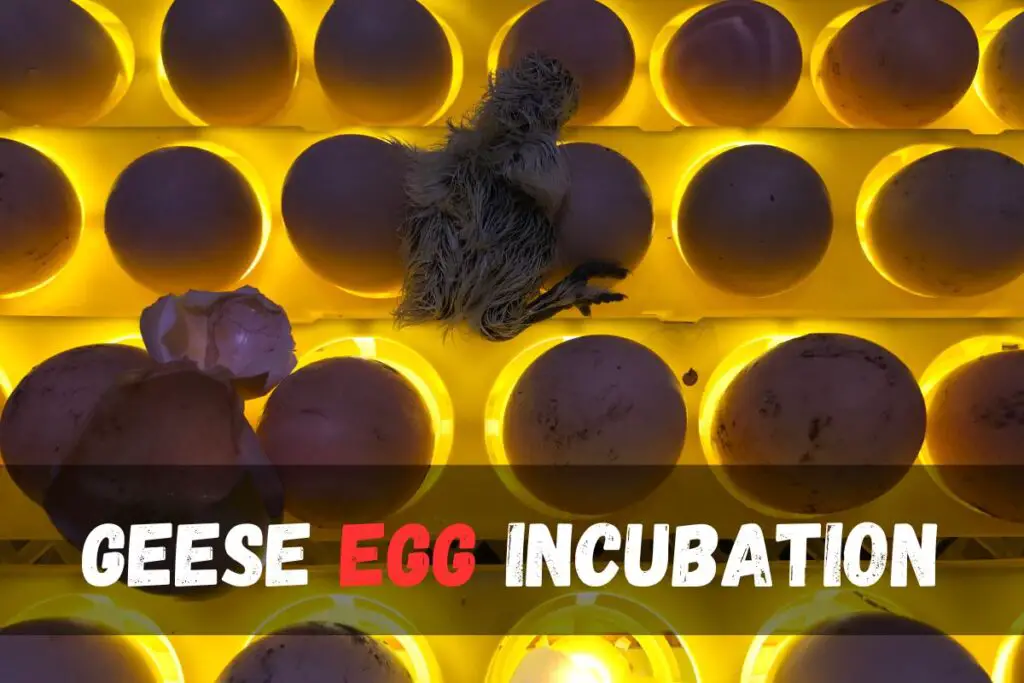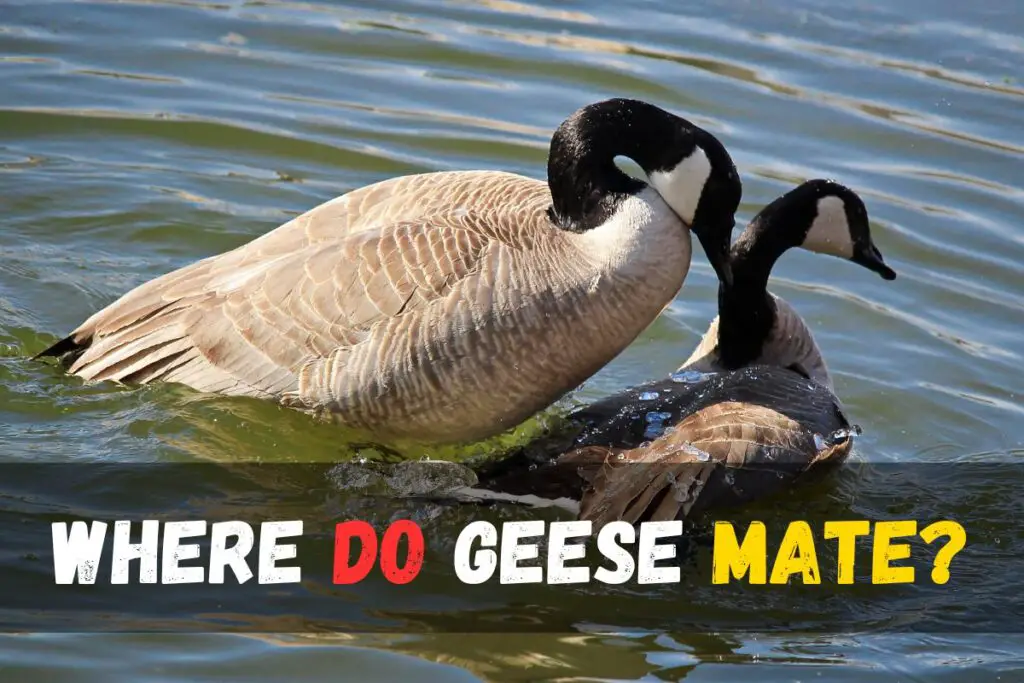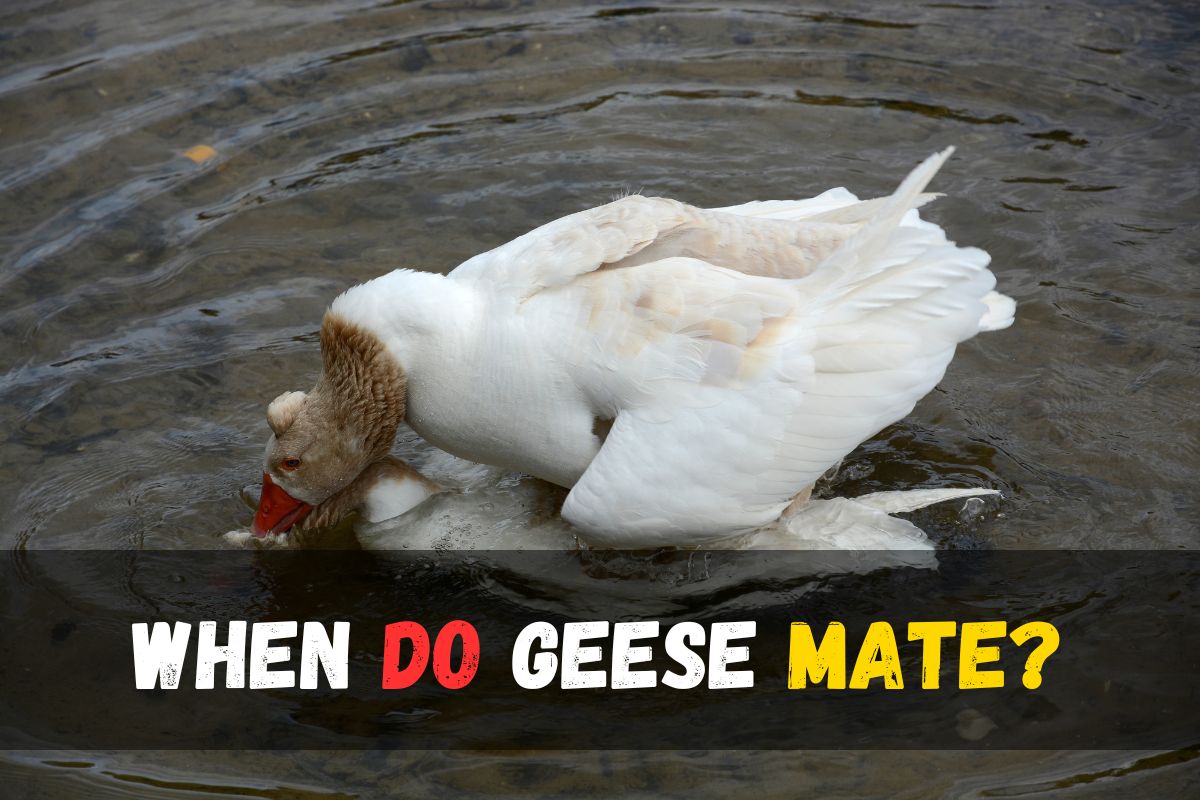During the breeding season, which typically spans from February to April, male Canada geese exhibit fascinating courtship behaviors as they seek their mates. These geese are known for their monogamous nature, forming strong bonds with their partners. They diligently search for suitable nesting sites, which can be found on islands, small hills, or amidst the bushes near a tranquil lake. These sites are often characterized by depressions filled with mosses, lichens, twigs, leaves, and down, providing a comfortable environment for egg incubation.
Can Geese and Ducks Mate?
The process of mating and reproduction among Canada geese is an intricate one. After successful mating, the female begins her vital role in the gestation period, incubating the eggs in the carefully prepared nest. Once hatched, the goslings rely on their dedicated parents for protection and guidance. Waterfowl experts often observe these young geese forming a crèche, a grouping of the young ones, providing safety in numbers.
A clutch of eggs typically consists of a single young male Canada goose, showcasing the importance of monogamous pairings in the survival of their species. Protecting the nest from predators and ensuring a warm and secure brooding area is paramount for the survival of these families. This meticulous approach to breeding is a testament to the Canadian geese’s commitment to ensuring the next generation’s success.
When Do Geese Lay Eggs?
How Do Geese Mate
Geese are fascinating creatures when it comes to reproduction, and their mating process involves a series of intricate steps that strengthen their bonds and ensure the survival of their species.
1. Pair Formation:
Geese are known for their strong and long-term pair bonds. During their early years, they engage in social interactions and choose a mate with whom they will form a pair. These pairs are often monogamous, meaning they stay together for multiple breeding seasons, and in some cases, for life. Pair formation typically occurs during the spring when geese are in their breeding season. The process of selecting a mate involves a combination of social behaviors, such as mutual grooming, synchronized vocalizations, and various courtship displays, which serve to strengthen the bond between the two geese.

2. Courtship:
Courtship is a crucial aspect of the geese’ mating process. It involves a series of behaviors and rituals that not only deepen the pair bond but also communicate the readiness to mate. Geese engage in head bobbing, where they rhythmically move their heads up and down, and mutual preening, where they groom each other’s feathers. These behaviors serve to build trust and intimacy between the pair. Additionally, synchronized vocalizations, such as honking or calls, play a role in courtship, allowing geese to communicate and coordinate their actions effectively.

3. Nesting:
Once a strong pair bond is established, the geese will select a suitable nesting site. This location is often near a water source, such as a pond, lake, or river, providing easy access to food and protection for their offspring. Building the nest involves collaboration between the male and female. They collect materials like twigs, grass, and down feathers to create a comfortable and secure nest.

4. Egg Laying:
The female goose, known as the “goose,” will lay her eggs in the nest. Typically, geese lay one egg at a time, with an interval of a day or two between each egg. The eggs are oval or elliptical and are usually pale in color, which helps them blend into the nest surroundings, offering some degree of camouflage and protection from potential predators.

5. Incubation:
Both the male and female alternate in incubating the eggs. The incubation period can last for several weeks, and it is essential for keeping the eggs warm and ensuring successful hatching. Geese are attentive parents and maintain a careful watch over their nest to prevent potential threats and regulate the temperature of the eggs. The shared responsibility of incubation allows both parents to rest and forage for food while safeguarding the eggs.

6. Hatching:
After the incubation period, the eggs will hatch, and the young goslings will emerge. This is an exciting and critical moment in the geese mating cycle. The parents will assist the goslings in breaking out of their eggshells. The goslings are born covered in soft down feathers and are highly vulnerable at this stage.

7. Raising Offspring:
Once the goslings have hatched, the parents shift their focus to caring for and protecting their young. They provide food and warmth for the goslings, teaching them essential survival skills. This includes showing them where to find food, how to swim, and how to recognize potential threats, such as predators. The family unit, consisting of the parents and their goslings, often remains cohesive as they navigate their environment and grow together.
Geese Mating Ritual Calls
The mating ritual of geese involves a fascinating series of behaviors. During the mating and breeding season, the male goose, also known as the gander, engages in a specific rhythmic display by spreading its wings, stretching, and flapping. In some cases, depending on the species of geese, the gander may even peck his mate forcibly.
If the female goose shows interest, she will partake in activities such as taking a dust bath, preening herself, or freshening up, much like humans do when preparing for a special occasion. Once both partners are ready, the gander will mount the female goose, and copulation takes place. This ritual leads to the formation of a mating pair, and throughout the breeding season, these geese may copulate up to 5 times, ensuring the continuation of their species. The geese communicate and coordinate their mating through these ritualistic behaviors, which serve as a fascinating example of nature’s intricate and purposeful processes.
Where Do Geese Mate?
Geese, known for their monogamous behavior, mate in various locations that are well-suited for nesting and raising their young. These birds can be found mating in places such as wetlands, marshes, ponds, and lakes, which offer abundant food sources and protection for their offspring. Islands within bodies of water are also popular choices, providing safety from ground predators and access to aquatic vegetation.

Grasslands and meadows are another option for some goose species, where they construct nests in grassy depressions and use their bodies to incubate the eggs. In the Arctic tundra, you can find Arctic-nesting geese like the snow goose, which migrate to these remote and inhospitable regions to mate and nest during the summer months. Additionally, certain urban-adapted geese may choose parks, golf courses, and other green spaces within cities for their mating and nesting activities. Geese select these locations based on their need for protection, access to water and food, and safety for their young goslings.
How Long Do Geese Mate for?
Geese are known for forming strong and often lifelong pair bonds, and their mating relationships can be quite enduring. In most cases, geese will mate for a single breeding season, which typically lasts from the spring through the summer. During this time, they will engage in courtship, mate, build nests, incubate eggs, and raise their goslings until they are ready to fledge.
However, many geese species are known to re-form and maintain their pair bonds from one breeding season to the next, which can extend their mating relationships over multiple years. Canada geese, for example, often mate for life and stay together year-round, participating in subsequent breeding seasons together.
While their bonds are strong, it’s important to note that not all geese mate for life, and there can be variations in behavior between different species and populations. Nevertheless, many geese do exhibit long-term pair bonds, making them a notable example of monogamous bird species in the animal kingdom.
What Do Geese Do When Their Mating Partner Dies?
When a mate of a monogamous goose dies, the surviving goose often goes through a period of mourning and grief. Geese form strong and lasting pair bonds, and the loss of a mate can be emotionally challenging for the surviving bird. During this period, the surviving goose may exhibit signs of distress, such as calling out for their deceased partner, searching for them, and displaying decreased appetite and listlessness. The duration of this grieving process can vary among individuals.
What a Group of Geese is Called
After a period of mourning, the surviving goose may begin to search for a new mate. The timing of this search can depend on factors like the availability of potential mates and the time of year. Once a new mate is found, the geese will go through the process of forming a new pair bond. This may involve courtship rituals, mutual displays of affection, and selecting a nesting site for the upcoming breeding season. If the species of geese raises goslings, the new pair will typically work together to raise offspring during the breeding season.
FAQ’S
Do Male Geese Try to Mate with Chickens?
Male geese may sometimes exhibit mating behaviors directed at other bird species, including chickens, especially if there are no female geese (geese of the same species) available. This behavior is not exclusive to geese and can occur in other bird species as well. It’s important to note that these interactions are usually driven by the strong mating instincts of the male geese and a lack of suitable partners in their species.

However, it’s essential to keep in mind that The mating attempts can result in injuries to the hens and, in some cases, even death
How Often Do Geese Mate?
Geese, like many birds, typically mate once a year during their breeding season. The specific timing of the breeding season can vary depending on the species of goose and its geographic location. In general, the breeding season for geese occurs in the spring and summer months when environmental conditions, such as temperature and food availability, are favorable for raising their young
At what age do geese stop mating?
Geese can be bred until they reach the age of 10, but genders should be culled when they reach 6 years of age. Generally, the mating capability and breeding performance of geese are influenced by their age. Geese might continue mating until they reach the age of 10, but the quality and frequency of their reproductive activities might decline with age. Therefore, while geese can technically mate until they’re around 10 years old, their optimal breeding capacity might diminish after reaching a certain age, typically closer to 10 years old.


